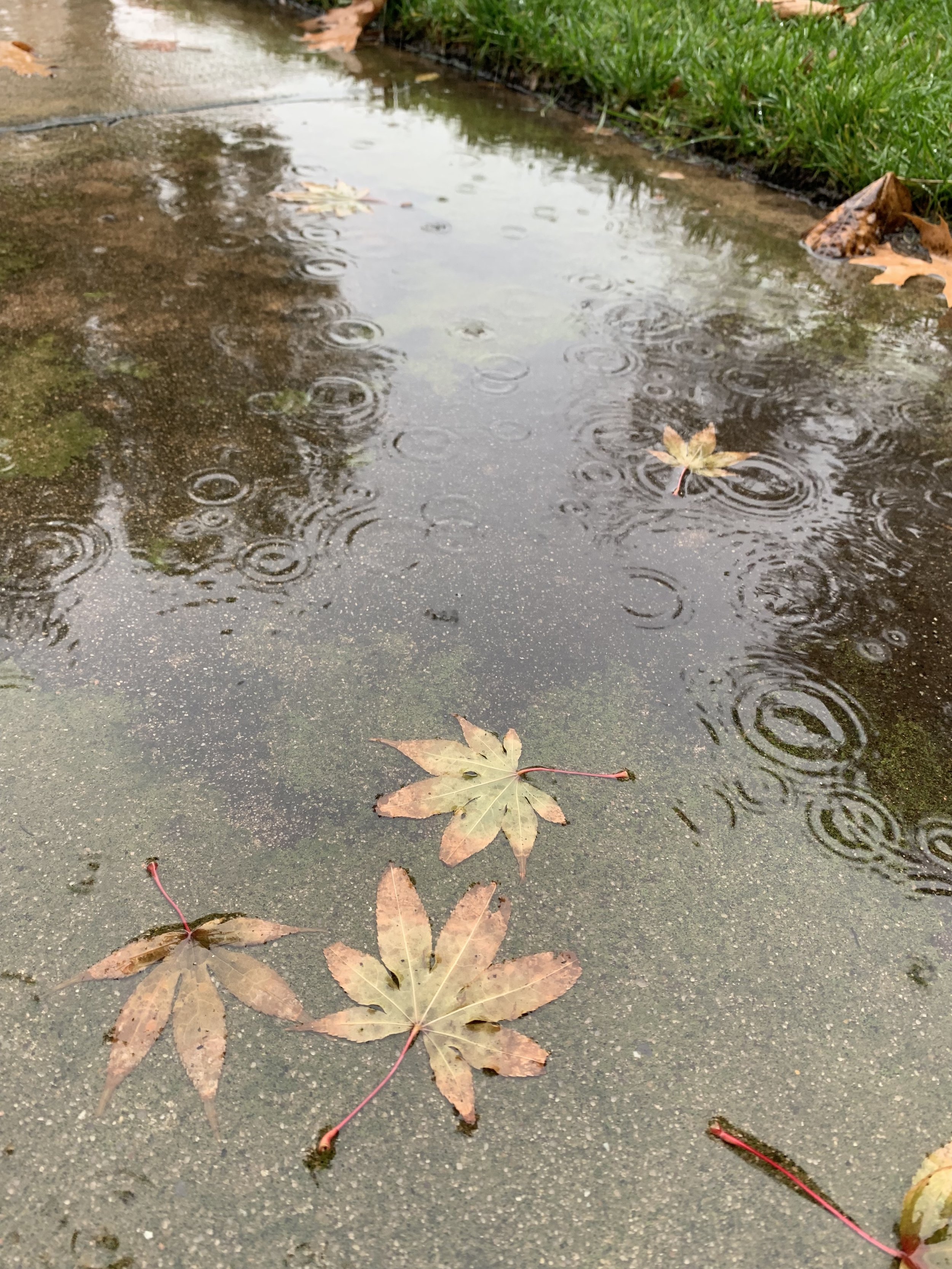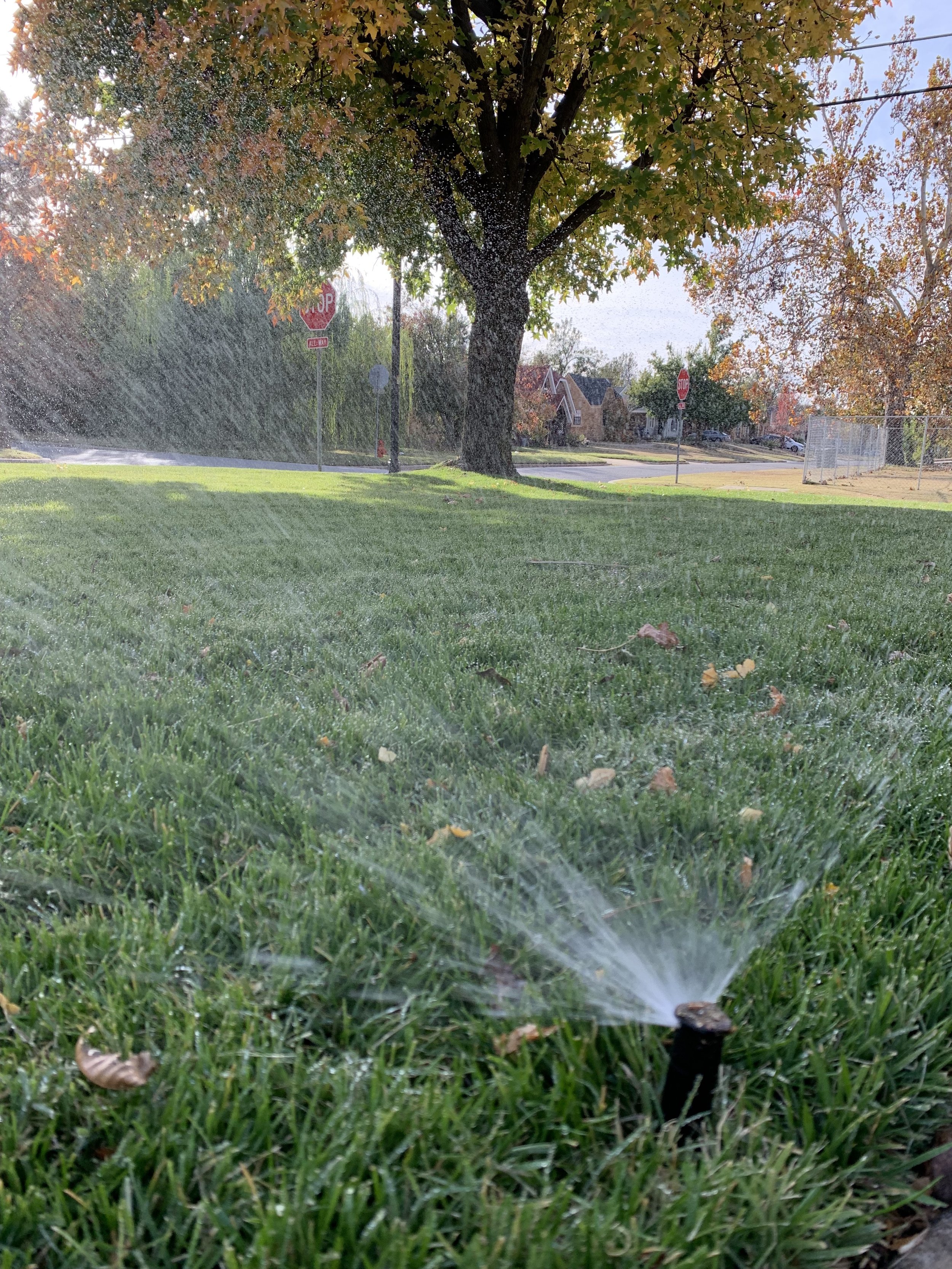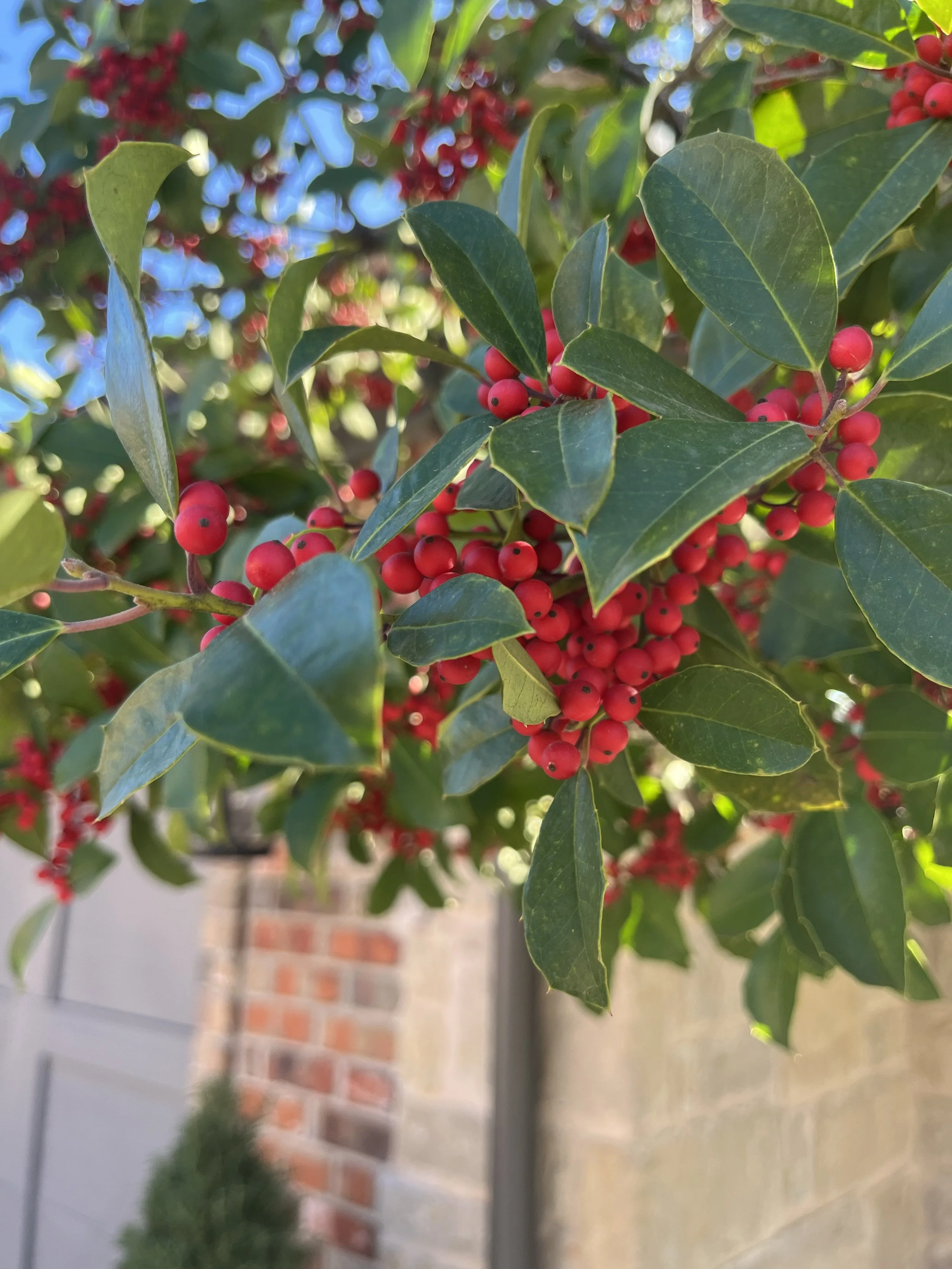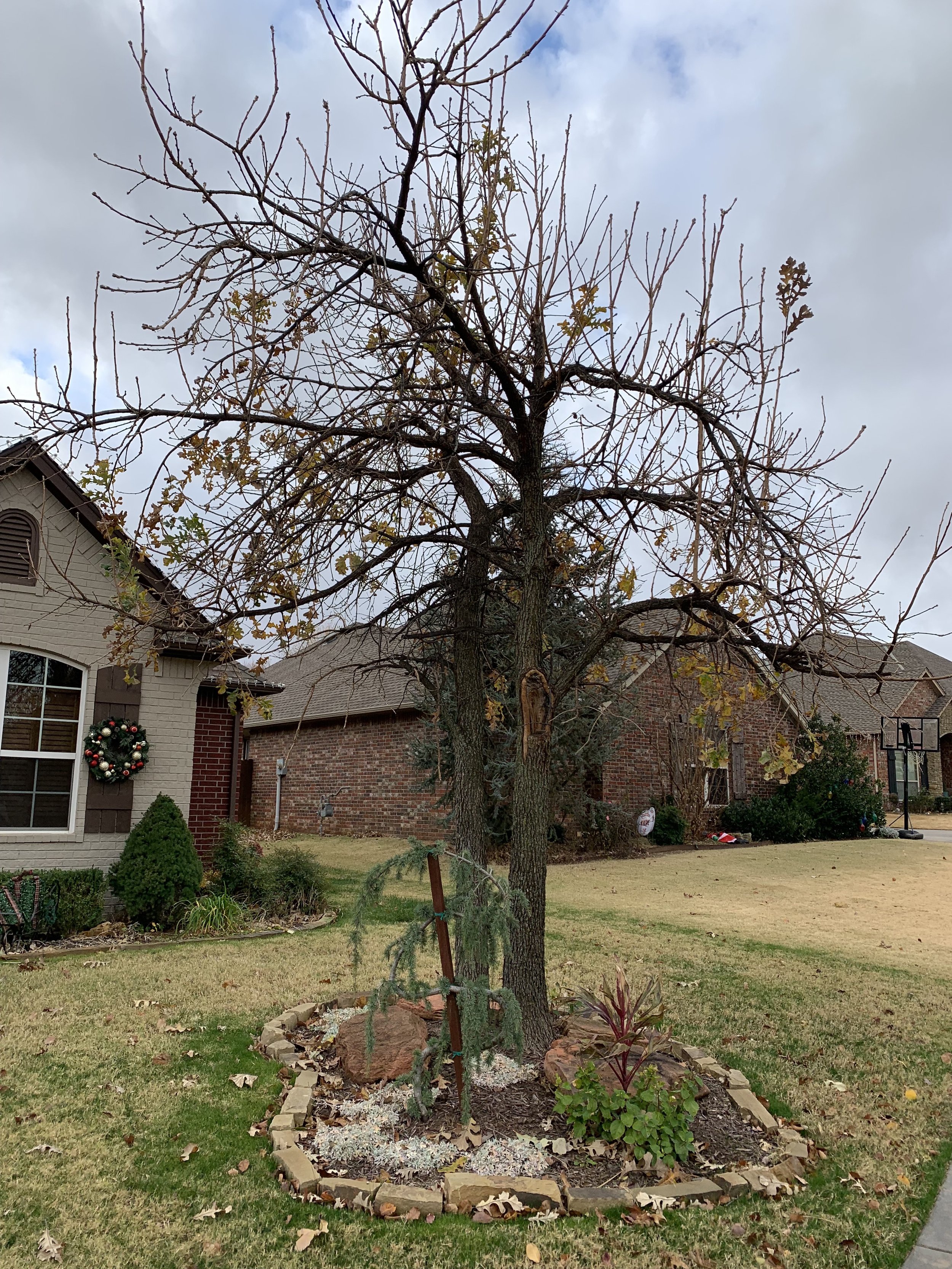December Lawn & Landscape Tips
As our focus turns from Thanksgiving to Christmas, it is easy to let the busyness of the holiday season distract you from your lawn and landscape activities.
Hey, it’s December, can’t I put my lawn and landscape tools away for the winter?
Not so fast! The best lawns and landscapes are always receiving some attention…attention so they not only look their best right all the time, but also their best this coming spring.
Lawn Mowing
Yes, warm season lawn (bermuda and zoysia) mowing has come to an end for the season. But if you have a cool season lawn (fescue and rye), your lawn still needs maintenance. Depending on weather conditions (primarily nighttime temperatures), you can expect cool season lawns to put on some growth well into December. So, don’t put your mower away just yet. Maintain fescue lawns at approximately 3” through the fall and winter.
Mulch mowing is a great way to manage leaves as long as you do it frequently.
With more and more nights with temperatures in the 20s fescue lawns are slowing down. But, don’t put your mower away too soon. Most Decembers, an occasional mowing is needed to keep them looking their best.
Leaf Removal
Keeping leaves removed is recommend for all lawns, but critical if you have a cool season lawn. If you remove leaves regularly you will find mulch mowing them back into the turf is an effective way to handle clean-up. If you allow leaves to collect in the corners of a fescue lawn over the winter, those areas will be thin to completely bare next spring.
Remember - fescue lawns need light even in the winter.
Shumard Oak in December
Fescue will completely die out if you allow leaves to pile up this winter.
Fescue lawns need light. Keep leaves removed regularly.
Monitor rainfall and anytime we receive a 1/2" rain or more. turn your irrigation off for a week.
A best practice is to water as needed throughout the winter. Anytime we go a week without some moisture, pick a nice day and water your lawn and landscape.
The red berries of Nandina add interest to the winter landscape.
Mulch
Another great landscape practice for improving survivability of your landscape plantings is a fresh layer of mulch. A 2-3” layer of mulch will provide insulation for your plant roots, retain moisture, and moderate soil temperatures. We recommend adding a layer of fresh cedar, pine, cypress, or pecan mulch.
Irrigation
Through the winter we recommend watering once per week anytime we go a week without ½” of rainfall.
If you have a rain/freeze sensor on your irrigation system and your system is equipped with freeze protection on the backflow, we recommend setting your system to run one time per week through the winter. If the temperature is below 35, the sensor will not allow the system to run and if there has been a recent rain, the system will remain off. If you do not have a rain/freeze sensor, pick a nice day once per week and run your system through a manual cycle.
Soil moisture is a critical ingredient for your landscape’s winter survival.
How can you know the soil moisture? www.mesonet.org is Oklahoma’s industry leading website for weather and climate information. The 1-day Average 2” Fractional Water Index is a good guide to watering decisions.
Most importantly, if your soil is dry, and the forecast has days below freezing, it is recommended you water thoroughly before the cold weather arrives.
Winter damage to our lawn and landscape occurs when the top 3” of soil is dry and temperatures are below freezing.
With the later than normal fall, many trees such as this Gingko is continuing to add bright colors to the early December landscape.
Hollies naturally add a festive touch to the holidays every December.
Winter is the best time to for corrective tree pruning. As leaves drop, inspect your tree canopies and make a plan to prune this winter.
Tree Trim
During winter dormancy, tree trimming is a great practice. As leaves fall and tree canopies are more visible, spend a few minutes analyzing the structure of your trees and start making plans for the next step of corrective pruning. We will cover tree pruning techniques in detail in the next few weeks.
With so many varieties of Japanese Maples, they add color throughout the fall and into December.
Spring Bulbs
Mid-November through mid-December is the perfect time to plant spring flowering bulbs (daffodils, hyacinths, tulips). Spring bulbs require extended cold temperatures to produce. If you procrastinate you run the chance of not having a good color show next spring.
For a good spring color show, bulbs need to be planted in the next couple of weeks.
Oak trees are one of the last trees to change color and then loose their leaves. Most falls you can count on them to add color to the landscape well into December.
Weed Control
If you have not applied the second fall/winter pre-emergent and broadleaf weed control to your lawn yet, it is not too late to do so. The goal with this application is to extend the prevention of weeds until the spring pre-emergent is applied.
Lawns that did not receive two fall pre-emergent applications are starting to see poa annua, the most prolific winter annual weed, start to germinate in thin turf areas. Fall pre-emergent applications are as equally important as spring pre-emergent applications.
Fertilizing Trees and Shrubs
If you have not fertilized your trees and shrubs this fall with a good balanced fertilizer there is still time to do so. Because central Oklahoma soil temperatures typically remain in the 40s through the winter, plant roots remain active. Fall fertilizer applications are important because nitrogen leaches from the soil and needs to be replaced. Our experience has found that a late fertilizer application to feed the roots will aid the health and beauty of your plants next spring.
Tree Planting
Tree farms are harvesting freshly dug trees now. Trees that are dug and replanted during dormancy have the best chance of survival. If you are thinking about adding trees to your landscape anytime in the next year, don’t wait till spring or summer, plant this winter.
Soil Test
If your lawn, shrubs, or trees often look a little off color and lack vigor, now would be a great time to check your soil health. Key soil measurements that determine soil health include pH, total exchange capacity, organic matter and nutrients.
Unhealthy Soil = Sick Lawn & Landscape
Soil Test Results + Recommendations = Healthy Lawn & Landscape
When key soil measurements are out of balance, your lawn and landscape will not respond correctly to fertilizer and weed control applications. With soil test results, Hall | Stewart will formulate a custom plan to return your lawn to a healthy condition.
The late fall pre-emergent application is timed to keep your lawn clean through the winter.
Nandina’s getting into the holiday spirit.
Even though fescue lawn growth has slowed, as a cool season grass, it typically keep great color through December.
Trees that are dug and replanted during dormancy have the best chance of survival.
Foot Traffic
Avoid walking on frozen grass. If is particularly damaging to fescue. Turf areas with winter foot traffic are slow to recover in the spring.
Hall | Stewart Lawn + Landscape has enjoyed being a part of your lawn and landscape this year.
Anytime you need assistance with a lawn or landscape issue, we would love the opportunity to help.
Our goal, as always, is to help you have your best lawn and landscape!
Lorne Hall
Hall | Stewart Lawn + Landscape
(405)367-3873























